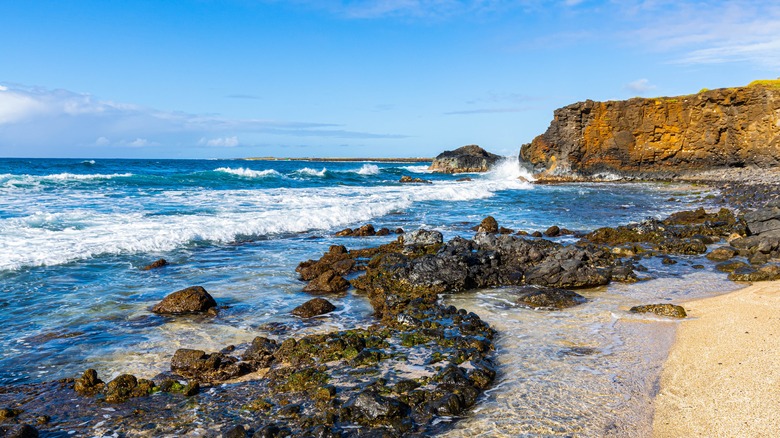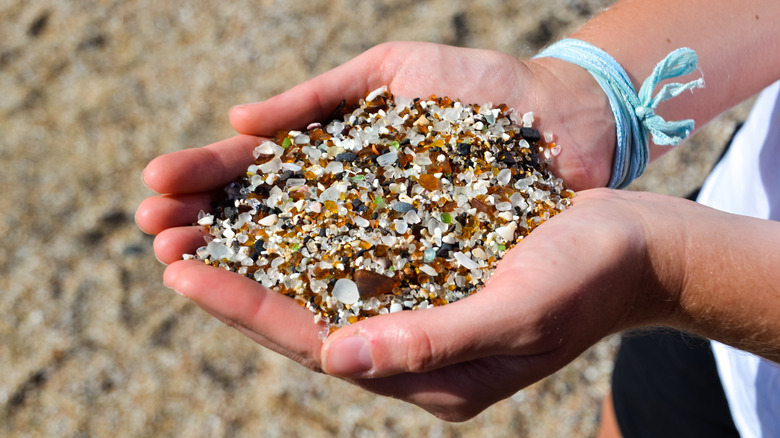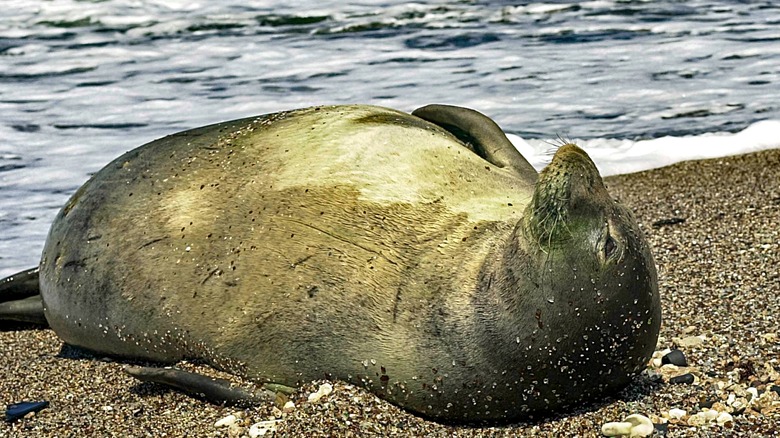An Industrial Area Of Hawaii Offers A Unique Glass Sand Beach & Monk Seal Sightings
Nestled in an unexpected corner of Kauai, Hawaii, lies a beach that defies conventional tropical paradise imagery. Glass Beach, located near Port Allen, is a testament to nature's resilience and ability to transform waste into a unique attraction. This small stretch of coastline is covered not in golden sand, but in tiny, smooth pieces of sea glass, creating a shimmering mosaic that captivates visitors from around the world that any guide to the best activities and adventures on Kauai is sure to mention.
Sat in an industrial area of Kauai, Glass Beach presents a stark contrast to the lush, pristine beaches typically associated with Hawaii. The beach's backdrop includes fuel tanks and industrial buildings, while nearby, an old Japanese cemetery adds a touch of historical intrigue to the landscape. Despite its unconventional setting, however, this beach has become a must-visit spot for many travelers to Kauai.
While the glass-strewn shore is undoubtedly the main attraction, visitors to this area are also drawn by another remarkable sight: Hawaiian monk seals. These endangered marine mammals occasionally haul out on the nearby shores, offering lucky observers a chance to witness one of Hawaii's most cherished native species. The combination of the glass sand and potential wildlife sightings makes this industrial corner of Kauai an unexpectedly rewarding destination.
The glass sand phenomenon
The origin of Glass Beach's distinctive shorelines dates back to before Kauai established proper waste management systems. For years, this area served as an informal dumping ground for trash, including large quantities of glass bottles and other discarded items. What was once environmental neglect has, over time, transformed into an inadvertent attraction.
The process of creating sea glass is a long one, typically taking between about 10 to 50 years. Ocean waves and currents tumble the glass fragments against rocks and sand, gradually smoothing their edges and imparting a frosted appearance. The result here is a beach covered in tiny, polished pieces of glass in various colors, with aqua, blue, and brown being the most common.
Today, the beach presents a changed landscape from its peak glass-covered days. The abundance of sea glass has diminished over the years, partly due to natural processes but also because of visitors collecting pieces as souvenirs. It's therefore crucial for the beach's preservation that visitors resist the temptation to remove glass from the site, and follow the principles of Leave No Trace; the "take only pictures, leave only footprints" ethos is particularly important here to ensure future generations can enjoy this unique phenomenon.
Beyond the glass
Adjacent to Glass Beach, visitors will find intriguing lava formations that play a crucial role in the sea glass creation process. The "Swiss Cheese Shoreline," as it's often called, features pockmarked lava rocks with numerous holes and crevices. These formations not only create a visually striking landscape but also contribute to the tumbling and smoothing of the glass pieces as waves crash against the shore. A visit to this area should be added to any road trip to see some of the island's best natural wonders.
While exploring the area, visitors should keep an eye out for the elusive Hawaiian monk seals, which can sometimes be spotted resting on the nearby beaches. It's important to remember that monk seals are protected under federal and state laws, due to their endangered status. If you're fortunate enough to see one, maintain a respectful distance of at least 50 feet and never attempt to approach or disturb these animals. Their presence adds a touch of wild Hawaii to this otherwise industrial landscape, and we hope they continue to grace us with their presence for years to come.
For those planning a visit, Glass Beach is best during low tide when more of the beach is exposed, and a few hours after high tide offers the best chances of seeing sea glass pulled inland by the waves. Closed-toe shoes are highly recommended for exploring the area, as the terrain can be rough, and sharp objects may be hidden among the glass. While the beach itself is not suitable for swimming due to strong currents and its industrial surroundings, it offers a unique photographic opportunity and a chance to witness an unusual example of nature reclaiming an urban area.


